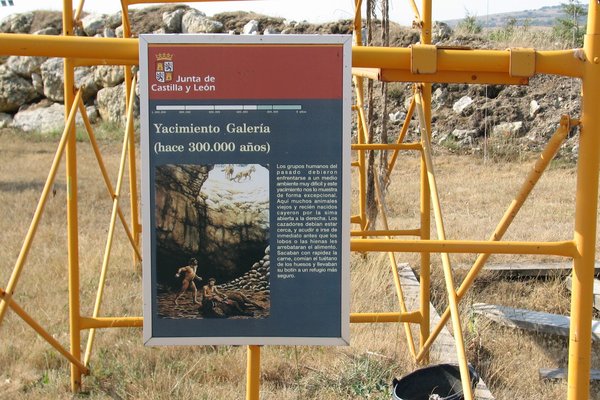Spain
Atapuerca
The Archaeological Site of Atapuerca is where fossils and stone tools of the earliest known hominids in Europe were found.
The Sierra de Atapuerca, an ancient karstic region, contains several caves that were inhabited from 1 million years ago. Several remains of the Homo heidelbergensis were found here, the predecessor to the Neanderthal. People from the Neolithic and Bronze Age also left paintings and engravings on the cave walls.
Community Perspective: Solivagant has explained the confusing ways of access. Clyde discovered a walking trail, an easy way to see something without having to succumb to a guided tour that is only given in Spanish.
Site Info
Official Information
- Full Name
- The Archaeological Site of Atapuerca (ID: 989)
- Country
- Spain
- Status
-
Inscribed 2000
Site history
History of Atapuerca
- 2000: Inscribed
- Inscribed
- Type
- Cultural
- Criteria
- iii
- v
Links
- UNESCO
- whc.unesco.org
- Official
-
- atapuerca.com — Atapuerca.com
All Links
UNESCO.org
- whc.unesco.org — whc.unesco.org/
Official Website
- atapuerca.com — Atapuerca.com
News Article
- July 9, 2022 france24.com — Oldest European human fossil possibly found in Spain
- Jan. 22, 2015 ceics.eu — Between 7,200 and 3,100 years ago humans from Atapuerca ate domestic dog, wild cat, fox and badger
- June 20, 2014 popular-archaeology.com — Fossil Human Skulls Unearthed in Atapuerca Shed Light on Neandertal Evolution
- Feb. 9, 2014 phys.org — Dating is refined for the Atapuerca site
- Dec. 6, 2013 forbes.com — Oldest Known Early Human DNA Recovered at Atapuerca
- July 28, 2013 artdaily.com — Archaeologists find 1.4-million-year-old flint in the caves of Atapuerca
- July 30, 2007 typicallyspanish.com — Archaeologists working at the Atapuerca dig in the Sierras east of Burgos have unearthed fragments of another skull.
Community Information
- Community Category
- Paleontology: Human evolution
Travel Information
Bilbao hotspot
Recent Connections
-
Archaeo-Genetics
Hominin Lineage: Linked 400,000-year-ol…
-
Perfect Inscriptions
2000 -
Neanderthals
Homo neanderthalensis bones and DNA rem…
Connections of Atapuerca
- History
-
-
Early Hominid Remains
Oldest in Europe (0.78 - 1 million years ago) -
Discovered during building of a Railway
"To the north-west is the group of sites revealed by excavation of a mining railway cutting (from which it takes its name, La Trinchera del Ferrocarril), never to be completed. These are in fact caves brought to light by the cutting and so with the appearance of rock shelters" (AB) -
Mousterian
"The site of Gran Dolina is a huge cave with several levels (TD-11 to TD-1), whose excavation began in September 1981......Level TD-11: Mousterian tools have been found."See en.wikipedia.org
-
Bronze Age
"The Galería del Silex contains abundant evidence of human occupation during the Neolithic and Bronze Age. More fifty painted and engraved panels have been recorded, with geometrical motifs, hunting scenes, and anthropomorphic and zoomorphic figures." (AB) -
Neanderthals
Homo neanderthalensis bones and DNA remains. (wiki)See en.wikipedia.org
-
Neolithic age
"The Galería del Silex contains abundant evidence of human occupation during the Neolithic and Bronze Age. More than fifty painted and engraved panels have been recorded, with geometrical motifs, hunting scenes, and anthropomorphic and zoomorphic figures." (AB) -
"Cave Man" sites
"The caves of the Sierra de Atapuerca contain a rich fossil record of the earliest human beings in Europe, from nearly one million years ago and extending up to the Common Era"
-
- Ecology
-
-
Fossils
The fossil remains in the Sierra de Atapuerca constitute an exceptional reserve of information about the physical nature and the way of life of the earliest human communities in Europe. (OUV, crit v)
-
- World Heritage Process
-
-
Perfect Inscriptions
2000
-
- Human Activity
-
-
Petroglyphs
Galeria del Silex -
Cannibalism
About 25% of the human remains found here showed the first evidence of cannibalism (wiki) -
Pictographs
Galeria del Silex
-
- Constructions
-
-
Railways
The 3 main caves of Grand Dolina, Galeria and Elefante were first discovered when a railway cutting ("Trinchera") was made through the limestone between 1896 ad 1901. See -See www.atapuerca.tv
-
- Timeline
-
-
Early Pleistocene
The earliest fossil hominid remains in Europe, the Pleistocene deposits, from around 800,000 BP as established by palaeomagnetic analysis, were found in the Gran Dolina site in the Sierra de Atapuerca (AB ev)
-
- WHS Hotspots
-
-
Bilbao hotspot
Bilbao hotspot
-
- Science and Technology
-
-
Archaeo-Genetics
Hominin Lineage: Linked 400,000-year-old European fossils directly to Siberian Denisovans, rewriting the map of early human migration. Nature (2014): Meyer et al. https://www.nature.com/articles/nature12788
-
News
- france24.com 07/09/2022
- Oldest European human fossil possi…
- ceics.eu 01/22/2015
- Between 7,200 and 3,100 years ago …
- popular-archaeology.com 06/20/2014
- Fossil Human Skulls Unearthed in A…
Recent Visitors
Visitors of Atapuerca
- Adolfo
- Alberto Rodriguez Gutierrez
- Alexander Lehmann
- Ammon Watkins
- Ana Lozano
- Anna Wludarska
- Argo
- Atila Ege
- awestix
- BaziFettehenne
- Bin
- Bram de Bruin
- campmany
- Carlos Sotelo
- Catoplayer
- Cheryl
- Christravelblog
- Claire Bradshaw
- Clyde
- Daniela Hohmann
- Daniel Chazad
- Dimitar Krastev
- Dorejd
- Echwel
- Elaine McArdle
- Els Slots
- Emilia
- Erik Jelinek
- Eva Kisgyorgy
- fabi-ddorf
- Fan Yibo
- Feldhase
- Femke Roos
- Filip Murlak
- Garry Jackson
- GeorgeIng61
- Hubert
- Iain Jackson
- Ivan Rucek
- Jakob F.
- Janina Lehmann
- Jan-Willem
- Jarek Pokrzywnicki
- Jasam
- Jean Lecaillon
- Jeanne OGrady
- Jens
- Jezza
- Joel on the Road
- Jonas Kremer
- Joyce van Soest
- Juha Sjoeblom
- Kbecq
- Kurt Lauer
- lappelduviiide
- Lara Adler
- Lisu Marian
- Little Lauren Travels
- Loic Pedras
- Luboang
- Lucas Del Puppo
- Luis Filipe Gaspar
- Maciej Gil
- Mathijs
- MAURO PODDA PANI
- MH
- Michael Novins
- Mikan22
- Mikko
- Milan Jirasek
- Msarmiento1979
- Nihal Ege
- PabloNorte
- Patrik
- Paul Schofield
- Petteri
- Philipp Leu
- Philipp Peterer
- Piotr Wasil
- Porcho
- puessergio
- Randi Thomsen
- rogerding
- Roger Ourset
- Roman Bruehwiler
- Sandmann15
- scubarrie
- Sergio Arjona
- Shandos Cleaver
- Solivagant
- Stanislaw Warwas
- Stijn
- Svein Elias
- Szucs Tamas
- Tamara Ratz
- Taotao Chen
- Tarquinio_Superbo
- Thomas Buechler
- Thomas Harold Watson
- Thomas van der Walt
- Tim Allen
- usagi1974
- Vanessa Buechler
- Viaje al Patrimonio
- voyager
- Wojciech Fedoruk
- Xander Huang
- Xiong Wei
- Xiquinho Silva
- Zhenjun Liu
- Zoë Sheng
Community Reviews
Show full reviews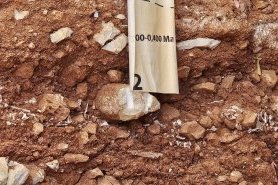
The last reviews date already from some years ago, so I thought: ‘why not add a new impression?’, because I was very lucky to have a different way to enjoy the excavation sites just a month ago. In a descriptive way, I don’t think that there is much to add to the earlier reviews, but it is probably good to emphasize that work continues each summer and important findings still occur almost every year, underlining or probably even strengthening the OUV of the site. See for example a press release from this summer: https://www.labrujulaverde.com/en/2024/07/new-remains-of-850000-years-old-homo-antecessor-at-atapuerca/.
On this early October Thursday, the season had ended and the troupes of archaeologists had gone. The one bus with visitors for that day was expected in the afternoon. Our party of four visited in the morning and we were guided through the site by a friend of mine who works there. We were very fortunate to get a tour in our own language (Dutch), that had plenty of time for anecdotes and Q&A’s, and brought us behind fences where tourists usually don’t go. It was a very enjoyable morning, for us as well as for my friend, even if his first remark was jokingly: ‘I know you’re only here to tick off the UNESCO list.’
The photo shows a layer with bone and tool fragments that hold prove of human cannibalism. True, if you want to see the bigger findings, you need to visit the museums where the skulls and tools etc. …
Keep reading 0 comments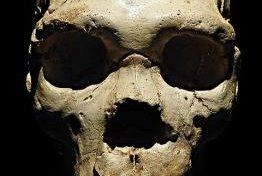
I visited this WHS in May 2016. Any foreignor who visits this WHS won't visit by chance. You have to make an effort to understand which site is a general museum on archaeology (CAREX), which site is a visitor centre on Atapuerca but contains none of the remains which give this site its OUV (CAYAC - from where all tours to the yacimientos depart), whether or not you want to physically visit the core zone of this WHS to experience a real archaeological excavation site and an interesting lecture in Spanish together with some information boards in English, or whether to visit the Museo de la Evolución Humana in Burgos to see the most important finds from the yacimientos of Atapuerca. I decided to do all of the above since I actually slept in Atapuerca while doing the Camino Frances and I spent 3 nights in Burgos, so I had enough time. Before arriving by walk in Atapuerca, I noticed that there was a 3km walking trail just before entering the town, opposite the unofficial UNESCO WHS pointing to the CAREX museum. I didn't mind a 3km detour especially since I'm also fond of birdwatching so I walked all the way to the Mirador above the Yacimientos de Atapuerca. This is not advertised anywhere, probably to earn more money through the organised tours as well as reducing the amount of people walking along the narrow one lane bumpy road leading to the yacimientos, which is also used by the coaches …
Keep reading 0 comments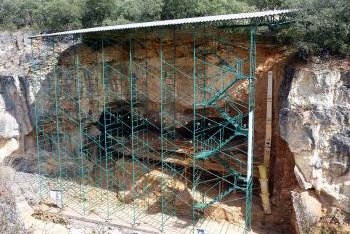
As the previous reviews indicate, visiting Atapuerca can be an unsatisfactory experience both because of the nature of the site itself and also because of all the usual difficulties about visiting times and guided tours which are common to many Spanish WHS, but are particularly awkward here. I will recount our experience and indicate that I don’t think we made the best choices!
First it is important to recognise that there are 2 “Visitor Centres” at Atapuerca
a. CAREX – Centro de Arqueologia Experimental. Also called “Parque Arqueologico y reception de visitiantes Atapuerca”. This is situated north of the excavation site near to the village of Atapuerca (42.379218 -3.501280)
b. CAYAC – Centro Accessos a los Yaciementos. This is situated just east of the village of Ibeas de Juarros on N120 (42.334178 -3.524889).
Then there are the excavations themselves at the famous railway cutting or “Trinchera” where the caves of Elefante, Grand Dolina and Galeria are still being excavated. These are situated a couple of kilometres north of CAYAC along a gravel road at 42.350692 -3.519595. After you turn off the N120 at the Visitor Centre there is an almost immediate left turn to it – however if you don’t make that turn but continue, you will reach the excavations.
And then finally there is the Museo de la Evolucion Humana in Burgos (Not of course part of the inscribed site) at 42.339120 -3.697158. This has 1 complete floor devoted to the Atapuerca discoveries where one can obtain an excellent …
Keep reading 0 comments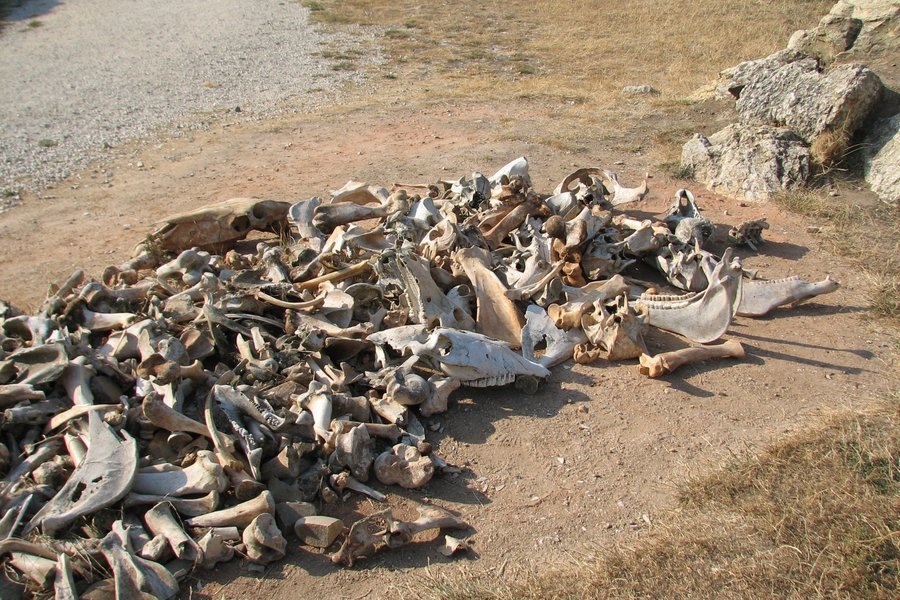
Very disappointing, as the teams were working and we had to climb up and around the edge of the site so we saw almost nothing. The guide stopped 3 or 4 times and spoke for 15 to 20 minutes (we could understand as we speak Spanish but there was no consideration for non-Spanish speakers) Leaflets in other languages would be useful, but it's pointless when work is going on, wait till a period when you can get to see things
Keep reading 0 comments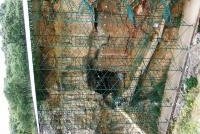
My visit to Atapuerca was only to the Yacimentos (excavations) and not to the archaeological park. The visit involved taking a bus to the village of Ibeas de Juarro (on the Burgos to Logrono route), where there is a visitors centre and small museum about Atapuerca. From Ibeas it is a 3km hike to the entrance of the railway cutting where the excavations start, and from there, there is a track which follows the top of the cutting. These excavations are still ongoing and a fenced off for security, but I got a birds eye view of the Suiva del Elefanta, the Galeria and the Gran Dolina.
Keep reading 0 comments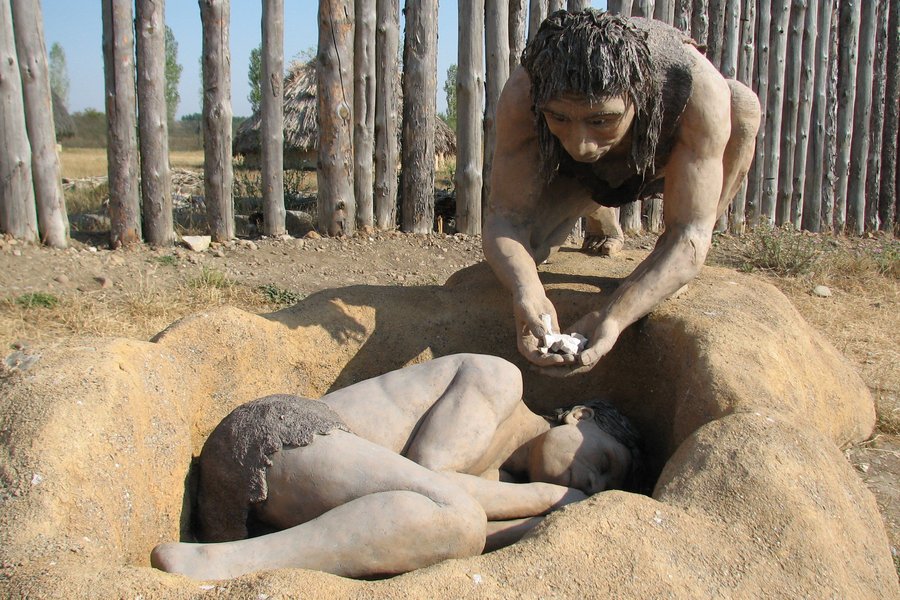
Atapuerca is quite a hard site to grasp, as most early hominid WHS are. The remains were found in caves in the Sierra de Atapuerca, an ancient karst landscape. There's not much to see of that nowadays: the surroundings can be described as 'hilly' at the most. It is mainly flat and dry Spanish land. Lots of Santiago de Compostela-pilgrims on the road by the way!
Unfortunately, I didn't have much time to spend in the area, so I opted for a guided tour through the archeological park. It's only a small area, and the tour is filled with (long!) explanations. The ranger shows how early man-made tools from stone, and how to make fire.
If you've got a day to spare, there are several guided tours on offer from both the towns of Atapuerca and Ibeas de Juarros. They include 2-hour trips to the caves in Yacimiento. I would try to pre-book here. Despite the 'difficult' theme, it's quite a popular site. There's also a museum and a visitor center (and a café / restaurant or two).
Keep reading 0 comments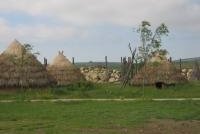
We could visit the archaeological park on a selfguided tour only without access to the actual excarvations. History is reconstructed by replicas of huts and fences demonstrating how our ancestors may have lived and hunted here until a few thounds years ago. I strongly recommend to arrange for a guided tour as it would give you a much better value add.
Keep reading 0 comments
